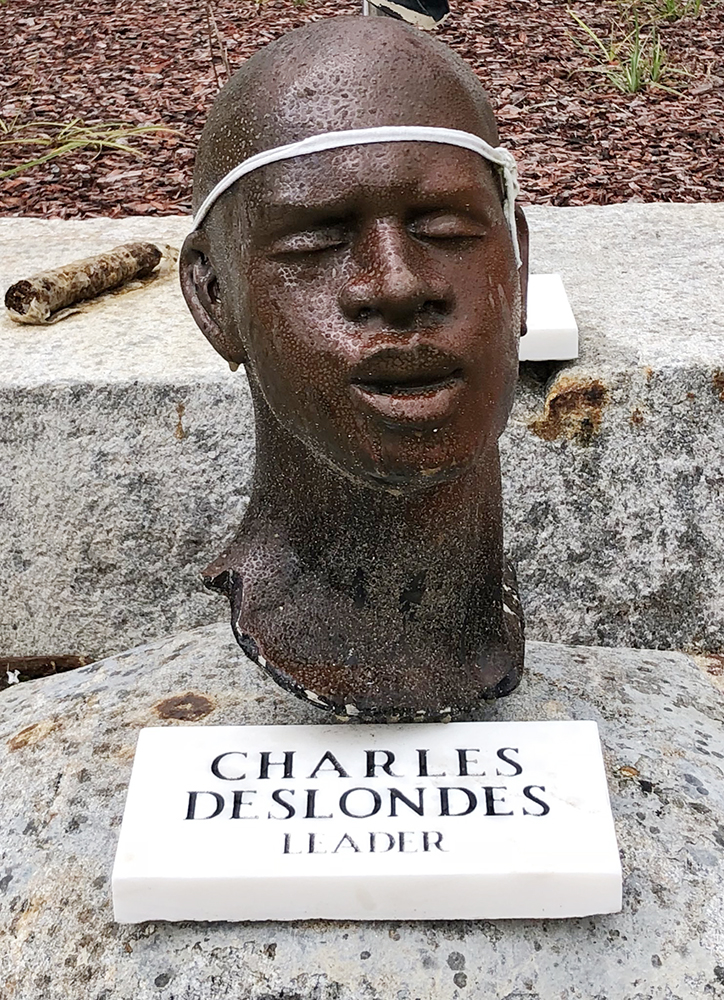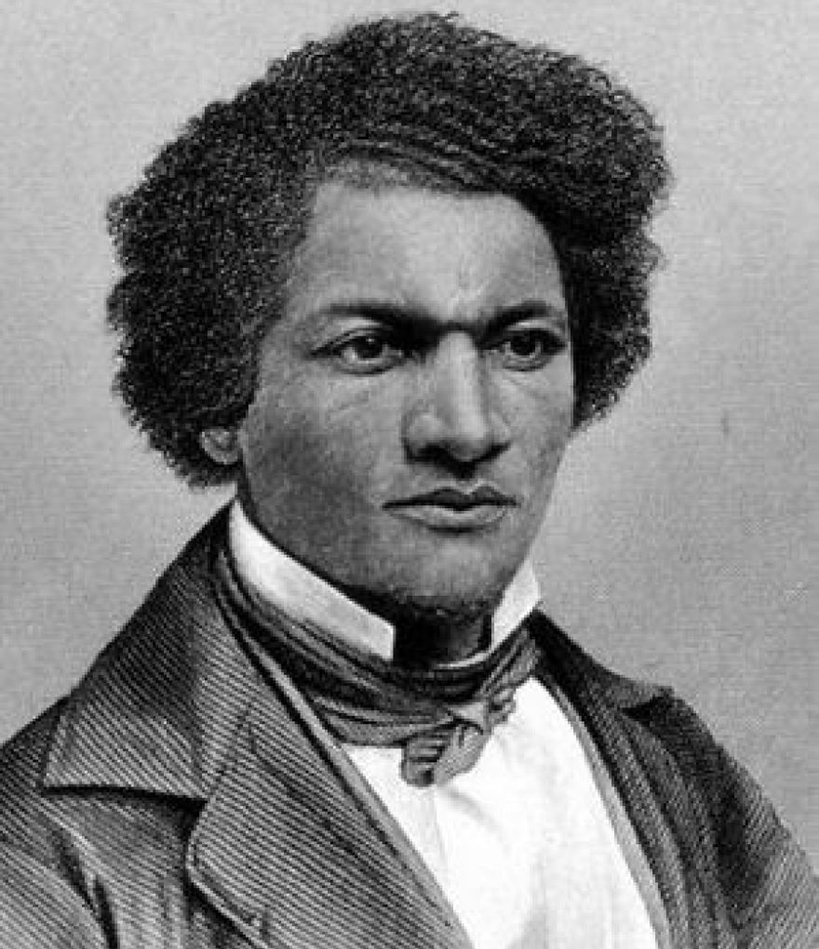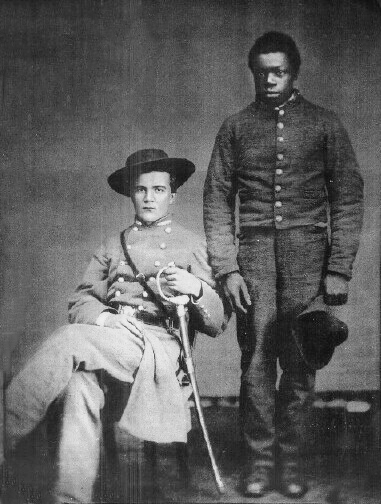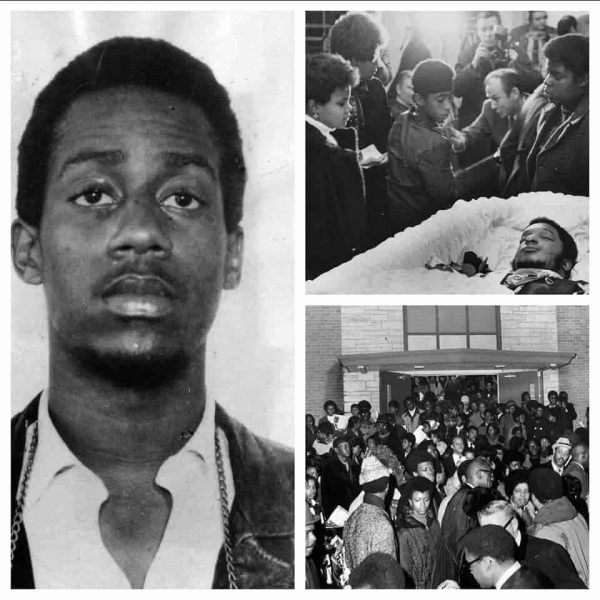Throughout the long, tortured centuries of oppression against Blacks in America, a special contempt was reserved for those who dared snitch against the endangered slave community, people who made their “livings” by selling out their own people, sending information to dreaded slave-catchers in the South, who used the infamous Fugitive Slave Act to track and re-enslave those who dared escape their fiendish clutches. – Mumia Abu-Jamal
In the Black Conscious community, we tend to pay a disproportionate amount of attention to the near-successes of our historical movements. What we fail to mention is likely the most critical aspect of those movements: how they came to their end.
By understanding how past movements failed, we can learn lessons that prevent us from making the same mistakes all over again.
Black Agents Destroyed Charles Deslondes
Charles Deslondes built and led the largest slave rebellion in U.S. history.
As Charles and his entourage marched on New Orleans, they BOOSTED their numbers with slaves from other plantations. On the two-day, twenty-mile march to New Orleans, as many as 500 slaves joined their ranks.
The slaves had come from all over the world; the Congo, Cuba, Kentucky, the Asante kingdom, and Senegambia.
Many of these men had been warriors in African civil wars with extensive combat experience.

Unfortunately, many more slaves betrayed the uprising by either voluntarily alerting their masters or negotiating their individual freedom in exchange for intelligence.
As a result, Charles Deslondes was captured. His hands were chopped off while he was still alive but cauterized to keep him alive. He was tortured for the better part of a day, shot in both legs, and then burned alive in January 15th.
His body was cut up and displayed inside of the city as a lesson to all those who would follow his example.
And to this day, very few people have even heard of Deslondes, let alone the movement he led.
Black Agents Destroyed Marcus Garvey
According to the FBI website, three African Americans by the names of Earl F. Titus, Arthur Lowell Brent, and Thomas Leon Jefferson were used to derail Marcus Garvey and his organization.
In his book Negro With a Hat – required reading for all members of the Pan-African Alliance – author Colin Grant details how Black agents infiltrated Garvey’s Black Star Line and sabotaged the ships.
These same agents would give valuable intelligence to J. Edgar Hoover – the same man who issued the infamous FBI directive:
“Prevent the rise of a ‘messiah’ who could unify and electrify the militant Black nationalist movement.”
In other words, the same Black informants that destroyed Marcus Garvey created the blueprint for COINTELPRO and the destruction of Stokely Carmichael, Malcolm X, Martin Luther King Jr, Geronimo Pratt, Huey P. Newton, George Jackson, The MOVE Movement, and thousands of other men, women, and children.
Black Agents Destroyed Denmark Vesey

Denmark Vesey was born a slave in the Caribbean and worked in the country of Haiti (then known as French Saint-Domingue). He eventually moved to the city of Charleston in South Carolina as a youth. Winning a large sum of cash, Vesey would buy his freedom and begin working under the trade of carpentry. He would help to create a branch of the African Methodist Episcopal Church, but his building was shuttered by White authorities.
Angered by the closing of his church and finding inspiration in the 1791 Haitian Revolution, Vesey would begin planting seeds to start a similar revolution among the slaves in Charleston. Planning the uprising to occur during Bastille Day (or French National Day) on July 14, 1822, Vesey hoped to liberate slaves and slay slave owners. Both freed slaves and those under ownership were recruited for the task, numbering into the thousands.
Sadly, the Vesey-led uprising would not take place due to a treasonous act from inside his camp.
Two slaves who stood in opposition of Vesey’s plans leaked the plot to their masters, resulting in Vesey, 130 Blacks, and four Whites being charged by Charleston authorities. Of the convicted, 37 of those involved in the revolt plans were hanged, including Denmark Vesey.
Black Agents Destroyed Kwaku
According to Face2Face Africa, in 1704, 10-year-old Kwaku was captured from present-day Ghana during the Ashanti Wars of the Golden Stool against Britain.
Kwaku was shipped to Antigua, where at a young age, Kwaku exhibited strength and bravery standing up to white supervisors who harassed him or any of his friends.
This spirit earned him the title of ‘Head Slave’ putting him in charge of his biggest and most lucrative plantation on the island.
Rather than becoming a ‘house Negro’, in 1728, Kwaku came up with a plan to rid the island of all westerners, abolish slavery and make the island of Antigua an African state.
After figuring out a great way to execute his plan, he shared details with several like-minded slaves who spent 8 years putting the pieces in place. The plan was supposed to happen as follows:
The plan was that, in late October of 1736, during a grand ball for the westerners in honor of George II’s coronation, a 10-gallon barrel of gunpowder would be smuggled into the building and blown up killing every single westerner at the ball.
The sound of the explosion was to be an alert for several allied enslaved Africans to start killing every white they came across causing a general massacre and the enthroning of Kwaku as leader of the new African Kingdom.
The plan was well hatched and more than ten huge plantations were involved in the plan. During an Akan ceremony at one of the planning meetings, Kwaku was initiated as King of the Black community.
Unfortunately for Kwaku and his allies, the plan was leaked to several slave masters by a slave who stayed anonymous for his own safety. The ball was postponed and Kwaku and several of his allies were captured.
After evidence was found against Kwaku and his captured men, they were sentenced to execution through horrifying means. The executions were meant to be slow and painful, done publicly to deter other Africans on the island from planning rebellions.
And of course, we know what happened to Malcolm X, Patrice Lumumba, Kwame Nkrumah, and Walter Rodney. All destroyed at the hands of Black agents.
Using Black Informants As A Strategy Of White Supremacy
The slaveholders have been known to send in spies among their slaves, to ascertain their views and feelings in regard to their condition. The frequency of this has had the effect to establish among the slaves the maxim, that a still tongue makes a wise head. They suppress the truth rather than take the consequences of telling it, and in so doing prove themselves a part of the human family. – Frederick Douglass
Slave owners, and Whites more widely, needed Black informants to protect personal and communal interests as well as to preserve the institution of slavery. Information about the misdeeds of Blacks was helpful to Whites, but Whites also benefited from the active efforts of Blacks to police other Blacks.
 Whites relied on informants out of necessity. Because Whites were outsiders to the slave community, and thus not personally privy to the inner workings of that community, detection and investigation of much slave misconduct would have been nearly impossible without information from slaves. If Whites were unable to access such otherwise secreted information, their personal safety, communal safety, financial interests, and ultimately the institution of slavery would have been seriously threatened.
Whites relied on informants out of necessity. Because Whites were outsiders to the slave community, and thus not personally privy to the inner workings of that community, detection and investigation of much slave misconduct would have been nearly impossible without information from slaves. If Whites were unable to access such otherwise secreted information, their personal safety, communal safety, financial interests, and ultimately the institution of slavery would have been seriously threatened.
Consequently, the necessity for protection of White interests was the driving factor respecting the types of offenses or misconduct meriting societal endorsement of slave informing. Commonly, Whites sought slave informants to detect and prosecute offenses that could result in the loss of White lives.
Additionally, informing was necessary to protect financial interests.
Because slaves could attack or kill their owners, owner awareness of what was happening among their slaves was a vital preventive measure. Some owners were desperate for information to protect their personal safety.
For example, Martha L. Nelson, a slave owner, wrote her state Governor seeking her slave’s pardon because he was a valuable informant. She wrote:
[He] would inform on the negroes, as soon as any white person would, if he knew or suspected anything wrong was plan[n]ing among them . . . I am almost a maniac from the loss of sleep, now in the dept[h] of the night I write, beseeching you to pardon my servant . . . such a servant ought not to be sent away particularly in these perilous times of insurrection.
As members of any movement dedicated to the noble ideals of liberating and uplifting the African Diaspora, we must accept that our enemies will use Black informants and agents for as long as the strategy works.
But if we refuse to continue the work of our ancestors out of fear of these agents, we play right into the hands of our enemies. Instead, we should arm ourselves with knowledge and practice counter-intelligence methods that protect our members and movements.
Identifying A Black Informant
“Good informant, good case. Bad informant, bad case. No informant, no case.” (Police saying)
One of the most detestable Black informants in modern history was Darthard Perry (aka Ed Riggs). This shitbag was responsible for monitoring, infiltrating, and destroying Black movements.
In 1973, he burned down the Watts Writers Workshop – a revolutionary cultural center in California.
It also emerged that Riggs had not only been sabotaging equipment at the Workshop but also used his association with it to infiltrate the Los Angeles chapter of the Black Panthers, and numerous other organizations that promoted black culture, ultimately being instrumental in their demise.
In the mid-1970s he started coming clean, and in the interview below, he reveals the tactics he used as a Black informant.
Because of race traitors like him and others, we know that there are four types of informants used by law enforcement:
1. Basic Lead Informant — ex-wives, ex-girlfriends, ex-employers, ex-associates, or ex-customers who want to get even. Most useful and accurate at revealing the location of persons or property and potential next actions.
2. Participant Informant — usually a go-between or arrestee turned informant who helps police instigate a sting, sabotage, or lure a suspect into surveillance (example: Darthard Perry, an FBI informant that burned down the Watts Writer’s Workshop)
3. Covert Informant — usually someone deep inside an organization with a falling out or difference of opinion and wants to provide spot intelligence over a period of time as long as their identity is protected and a pleasant future guaranteed for them (example: Herbert Boulin, the owner of a Harlem-based black doll company. As Garvey and the U.N.I.A. increasingly came under attack from internal dissenters, black critics, and the federal government, one of the few people Garvey confided in was Boulin.)
4. Accomplice-witness Informant — usually a co-defendant in a criminal case who agrees to testify for the prosecution and/or do one last undercover operation (by being wired for sound)
An informant isn’t going to let you know that they are informants, so you will have to proactively seek them out. This means maintaining a constant posture of paranoia and vigilance.
 William O’Neal (left), the FBI informant who infiltrated the Black Panthers, responsible for the assassination of Black Panther Party Chairman Fred Hampton.
William O’Neal (left), the FBI informant who infiltrated the Black Panthers, responsible for the assassination of Black Panther Party Chairman Fred Hampton.
If you pay attention to those around you, Informants will make themselves known. After all, they are usually not trained and official government agents – they are merely being coached by them.
As soon as they join, they jockey for positions that allow access to data, such as membership lists and accounts information, and are super helpful – offering to ferry people to protests and take them home afterward.
To get access and earn everyone’s trust, an informant or an agent will be unusually helpful. When you need seats for a meeting set up, they are there. When you need errands ran, they are happy to oblige. They are the first ones in the auditorium and the last ones to leave.
They ask questions of everyone but are vague with answers when you question them
They come on board and immediately start talking to everyone and participating in everything that’s going on. All the other members seem to be social with them. He or she actively solicits information from other members (Are you married? What do you do here?), asking for specifics while avoiding giving out any details about themselves.
When they do reveal anything about themselves, it is scripted – a carefully crafted cover designed to throw you off of their real identity.
They instigate
If your organization isn’t breaking the law outright, they will try to provoke you to. They “know a guy who can get us some bomb material”, or suggest rioting or tearing some shit up. If your organization is pro-marijuana reform, they “know a guy who can get us some good shit”.
Counter-Informant Strategies
Information is the lifeblood of every informant. Therefore, you must come to see the information that you create as both vulnerabilities and as a weapon that you can use to expose informants.
 Informants look for information that can be used to:
Informants look for information that can be used to:
- Identify and assassinate high-value targets within an organization
- Create psychological profiles of members and leaders within organizations to identify their strengths and weaknesses
- Evaluate the financial stability of members of an organization to determine who can be ‘bought’
- Evaluate the criminal liability of members of a movement, to determine who can be threatened with incarceration
- Exploit weaknesses in systems used to keep the organization active
- Derail or hi-jack operations
These weaknesses can always be protected, but as a leader or member, you can take steps to shore up your vulnerabilities. These steps are known as Counterintelligence.
Counterintelligence includes all the activities undertaken to limit the ability of competitors, antagonists, and infiltrators to gather actionable information about your company, organization, or movement.
These activities can include:
- Creating a system of background checks and security clearances
- Using double agents
- Feeding known informants bad information
- Concealing your activities – the public doesn’t need to know the who, what, when, where, and why of closed-door meetings or operations
- Hiding your sources of income, staff positions, short and long term plans, and how you operate
- Screening and studying members at length – good agents and informants can conceal their intentions for years, but will slip up eventually.
- Control your social media behavior. That includes the information that you leak. These platforms are NOT needed to organize grassroots movements, and are infamous for their invasions of privacy!
- Monitoring and restricting access to where information is stored. Publicly available options like Google Drive, Dropbox, or Box are typically ill-advised.
Above all, every member of the organization should be trained to identify and deal with informants and agents. Members of the movement should devote as much time learning about potential threats as they devote to learning about other areas of life. Many of us know about COINTELPRO, but are we knowledgeable about the tactics and strategies that the program used?
Counterintelligence is not an option. Revolutions are serious. Lives are at risk and history hangs in the balance. The ‘lazy’ revolutionary can easily find themselves a martyr for their cause.

